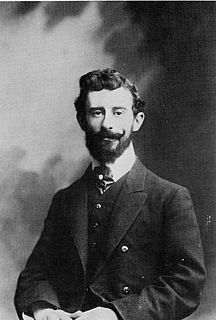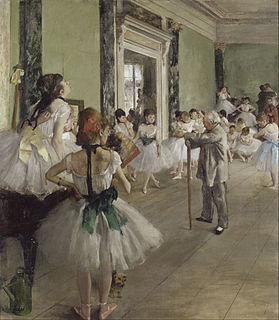
The celesta or celeste is a struck idiophone operated by a keyboard. It looks similar to an upright piano, albeit with smaller keys and a much smaller cabinet, or a large wooden music box (three-octave). The keys connect to hammers that strike a graduated set of metal plates or bars suspended over wooden resonators. Four- or five-octave models usually have a damper pedal that sustains or damps the sound. The three-octave instruments do not have a pedal because of their small "table-top" design. One of the best-known works that uses the celesta is Pyotr Ilyich Tchaikovsky's "Dance of the Sugar Plum Fairy" from The Nutcracker.

Music for Strings, Percussion and Celesta, Sz. 106, BB 114 is one of the best-known compositions by the Hungarian composer Béla Bartók. Commissioned by Paul Sacher to celebrate the tenth anniversary of the chamber orchestra Basler Kammerorchester, the score is dated September 7, 1936.
A bacchanale is an orgiastic musical composition, often depicting a drunken revel or bacchanal.

Miroirs is a five-movement suite for solo piano written by French composer Maurice Ravel between 1904 and 1905. First performed by Ricardo Viñes in 1906, Miroirs contains five movements, each dedicated to a fellow member of the French avant-garde artist group Les Apaches.
"Heroes" Symphony is a symphony composed by American composer Philip Glass in 1996 based on the album "Heroes" by David Bowie. Glass based his earlier Low Symphony on the David Bowie album Low.
Christopher Peter Wheeldon OBE is an English international choreographer of contemporary ballet.
The Wooden Prince, Op. 13, Sz. 60, is a one-act pantomime ballet composed by Béla Bartók in 1914–1916 to a scenario by Béla Balázs. It was first performed at the Budapest Opera on 12 May 1917 under the conductor Egisto Tango.

The Flood: A musical play (1962) is a short biblical drama by Igor Stravinsky on the allegory of Noah, originally written as a work for television. It contains singing, spoken dialogue, and ballet sequences. It is in Stravinsky's late, serial style.
Serenade is a ballet by George Balanchine to Tschaikovsky's 1880 Serenade for Strings in C, Op. 48. Students of the School of American Ballet gave the first performance on Sunday, 10 June 1934 on the Felix M. Warburg estate in White Plains, N.Y., where Mozartiana had been danced the previous day. This was the first ballet that Balanchine choreographed in America. It was then presented by the Producing Company of the School of American Ballet on 6 December at the Avery Memorial Theatre of the Wadsworth Atheneum with sets by the painter William Littlefield. Balanchine presented the ballet as his response to the generous sponsorships he received during his immigration to America. The official premiere took place on 1 March 1935 with the American Ballet at the Adelphi Theatre, New York, conducted by Sandor Harmati.
Arch Higgins was a soloist with New York City Ballet. He began his study at eight years with Berkeley Ballet Theater with former City Ballet dancer Sally Streets. From 1982 he attended summer courses at the School of American Ballet which he entered full-time on scholarship four years later. He was the recipient of the Mae L. Wien Award and joined the NYCB corps de ballet in 1989. Higgins was promoted to soloist in 1998 and danced until 2011. He is now a guest teacher for the company and assistant children's ballet master.
Rachel Rutherford is a soloist with New York City Ballet.
Orpheus is a thirty-minute neoclassical ballet in three tableaux composed by Igor Stravinsky in collaboration with choreographer George Balanchine in Hollywood, California in 1947. The work was commissioned by the Ballet Society, which Balanchine founded together with Lincoln Kirstein and of which he was Artistic Director. Sets and costumes were created by Isamu Noguchi.

Ondine is a ballet in three acts created by the choreographer Sir Frederick Ashton and composer Hans Werner Henze. Ashton originally produced Ondine for the Royal Ballet in 1958, with Henze commissioned to produce the original score, published as Undine, which has since been restaged by other choreographers. The ballet was adapted from a novella titled Undine by Friedrich de la Motte Fouqué and it tells the tale of a water nymph who is the object of desire of a young prince named Palemon. The première of the ballet took place at the Royal Opera House, London, on 27 October 1958, with the composer as guest conductor. The first major revival of this Ashton/Henze production took place in 1988.
The Perfect Fool is an opera in one act with music and libretto by the English composer Gustav Holst. Holst composed the work over the period of 1918 to 1922. The opera received its premiere at the Covent Garden Theatre, London on 14 May 1923. Holst had originally asked Clifford Bax to write the libretto, but Bax declined.
Anna Karenina is an opera in two acts by American composer David Carlson, based on the novel Anna Karenina by Leo Tolstoy, commissioned by Florida Grand Opera to celebrate the 2007 opening of the Ziff Ballet Opera House at the Adrienne Arsht Center for the Performing Arts, co-commissioned by Opera Theatre of Saint Louis. The libretto is by British director Colin Graham, originally contemplated for Benjamin Britten's opera commissioned by the Bolshoi Theatre. Graham was to have directed the original production; after his death only weeks before the opera's opening night, the direction was taken over by Mark Streshinsky. The opera is in two acts with a prologue and an epilogue, lasting just over two hours.
Raymond Gniewek is an American violinist. He served as concertmaster of the Metropolitan Opera orchestra for 43 years; upon his appointment in 1957 he was the youngest person to ever hold the post. He has also had a career as a soloist. His final performance as concertmaster with the orchestra was a concert performance in Carnegie Hall of Béla Bartók's Bluebeard's Castle in 2000. Gniewek is a native of New York City, where he began his musical education; he continued at the Eastman School of Music, studying with Andre de Ribaupierre and Joseph Knitzer, becoming concertmaster of the Eastman Rochester Orchestra and associate concertmaster of Rochester Philharmonic under Erich Leinsdorf. Other teachers were the Canadian violinist Albert Pratz and Raphael Bronstein of New York City.
Gerardo Gandini was a pianist, composer, and music director, who became one of the most relevant figures of contemporary Argentine music of the second half of the 20th century. He studied composition with Goffredo Petrassi and Alberto Ginastera, and piano with Roberto Caamaño, Pía Sebastiani, and Ivonne Loriod. It is noteworthy that he was Astor Piazzolla's pianist in the Sexteto Nuevo Tango formed in 1989.
Silver Ladders is an orchestral composition by the American composer Joan Tower. The work was jointly commissioned by the St. Louis Symphony and Meet the Composer while Tower was composer-in-residence with the St. Louis Symphony. It was first performed in St. Louis on January 9, 1987, by the St. Louis Symphony under the conductor Leonard Slatkin. The piece is dedicated to Slatkin with "admiration for his unswerving musical integrity and confidence in presenting the music of his own time."





